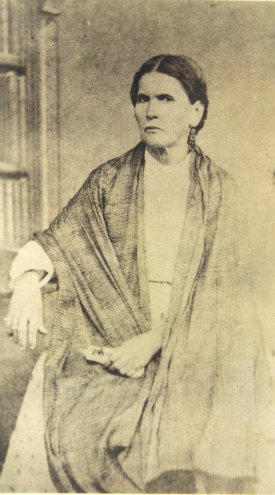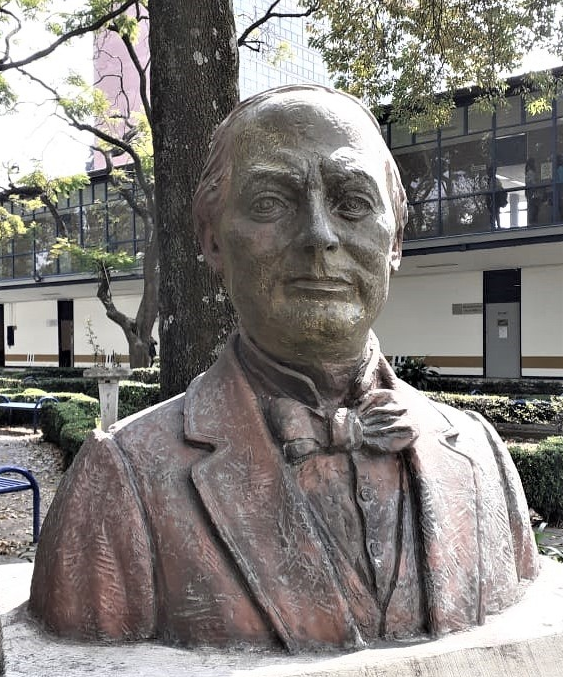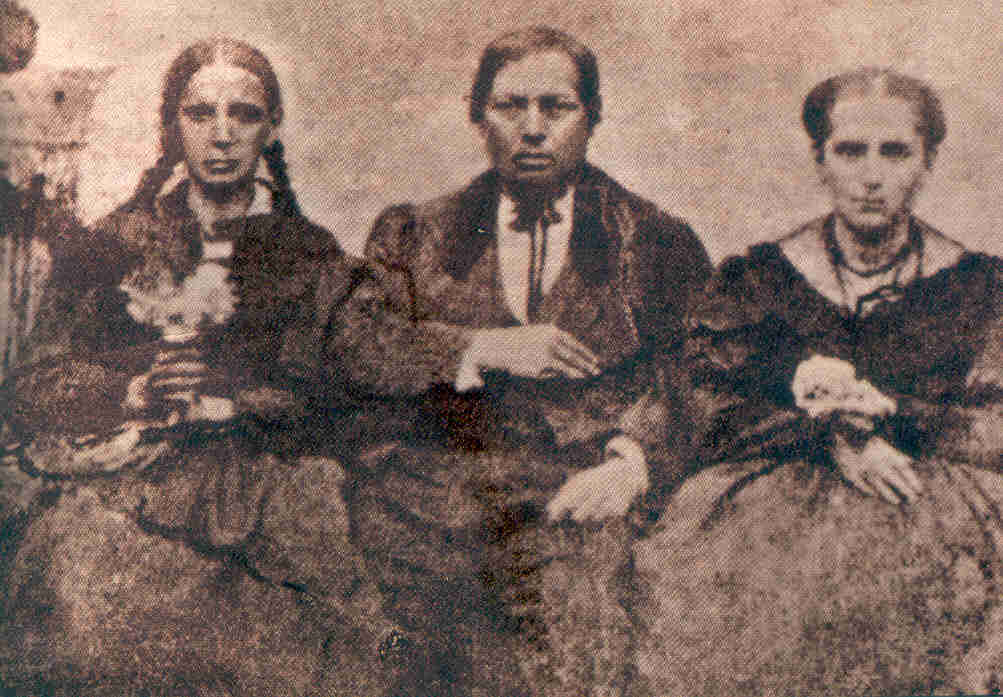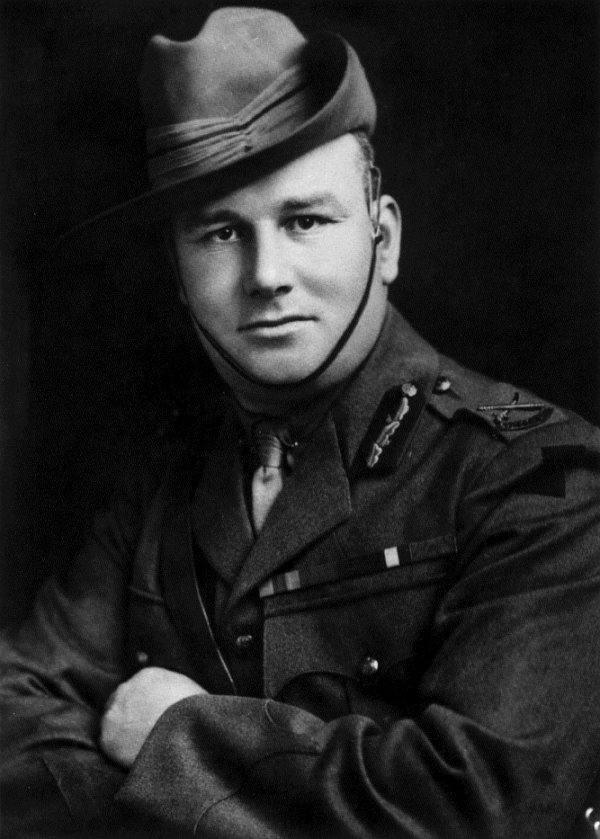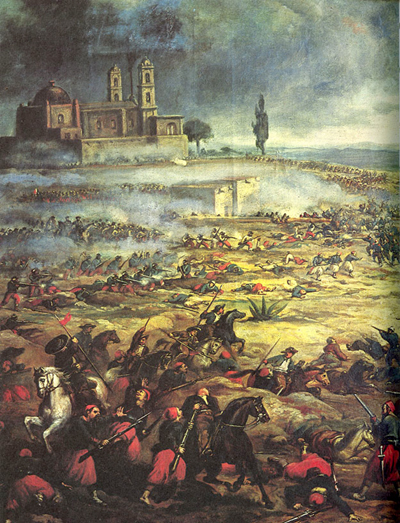|
Juan N. Méndez
Juan Nepomuceno Méndez Sánchez (2 July 1820 – 29 November 1894) was a Mexican general, a List of political parties in Mexico#Former parties, Liberal politician and confidant of Porfirio Díaz, and interim President of Mexico, president of the Republic for a few months during the Porfiriato. He served from 6 December 1876 until 17 February 1877. Biography Before the presidency Born in Tetela de Ocampo in the Sierra Norte de Puebla, Méndez worked in commerce and livestock until 1847. In that year, he enlisted in the Mexican Army, army to fight the United States in the Mexican–American War. He continued in the army after the war, and on 15 December 1854 he was named commander of a battalion in the Puebla National Guard. His unit adhered to the Plan de Ayutla in 1854 and took an active part in the War of the Reform, the Second French intervention in Mexico, War of the French Intervention and the war opposing Maximilian I of Mexico, Emperor Maximilian. He defended Puebla aga ... [...More Info...] [...Related Items...] OR: [Wikipedia] [Google] [Baidu] |
Porfirio Díaz
José de la Cruz Porfirio Díaz Mori ( or ; ; 15 September 1830 – 2 July 1915), known as Porfirio Díaz, was a Mexican general and politician who served seven terms as President of Mexico, a total of 31 years, from 28 November 1876 to 6 December 1876, 17 February 1877 to 1 December 1880 and from 1 December 1884 to 25 May 1911. The entire period from 1876 to 1911 is often referred to as Porfiriato and has been characterized as a ''de facto'' dictatorship. A veteran of the War of the Reform (1858–1860) and the French intervention in Mexico (1862–1867), Díaz rose to the rank of general, leading republican troops against the French-backed rule of Maximilian I. He subsequently revolted against presidents Benito Juárez and Sebastián Lerdo de Tejada on the principle of no re-election. Díaz succeeded in seizing power, ousting Lerdo in a coup in 1876, with the help of his political supporters, and was elected in 1877. In 1880, he stepped down and his political ally Manue ... [...More Info...] [...Related Items...] OR: [Wikipedia] [Google] [Baidu] |
Zacapoaxtla
Zacapoaxtla is a city and seat of the Zacapoaxtla Municipality, in the Mexican state of Puebla. The city has a population of 8,062 inhabitants, while the municipality has 49,242 inhabitants at the 2000 census.''XII Censo General de Población y Vivienda 2000Principales resultados por localidad. Puebla', Instituto Nacional de Estadística Geografía e Informática, 2000. The name means ''place where straw is counted'', and it originates from Nahuatl roots: ''zacatl'' – straw; ''pohuatl'' – to count; and ''tlān'' – place. The name comes from the tribute people had to pay, i.e. as bales of straw. The BUAP has a Regional Section there, which offers degrees in law, business administration and psychology. Geography The city of Zacapoaxtla is located on a mountainous terrain on the northern part of the state, on the morphological region known as Sierra Norte or Sierra de Puebla, amidst the Sierra Madre Oriental. The city is surrounded by three mountains: "Tres cabezas" (''Th ... [...More Info...] [...Related Items...] OR: [Wikipedia] [Google] [Baidu] |
José María Iglesias
José María Iglesias Inzáurraga (January 5, 1823 – December 17, 1891) was a Mexican lawyer, professor, journalist and liberal politician. He is known as author of the Iglesias law, an anticlerical law regulating ecclesiastical fees and aimed at preventing the impoverishment of the Mexican peasantry. From October 31, 1876 to January 23, 1877, as revolts against the presidency of Sebastian Lerdo de Tejada broke out, he claimed the interim presidency of Mexico. However, he was never undisputed president. President Lerdo would be overthrown and Porfirio Diaz would emerge as the victor in the ensuing power struggles, after which Iglesias went into exile to the United States. Early life José María Iglesias was born into a wealthy family in Mexico City, but when he was 12 his father died. Five years later, his mother also died. His maternal uncle Manuel Inzáurraga took responsibility for his education. He studied for the law ''Colegio Gregoriano'' in Mexico City, graduating ... [...More Info...] [...Related Items...] OR: [Wikipedia] [Google] [Baidu] |
Juan Nepomuceno Méndez Oleo (480x600)
''Juan'' is a given name, the Spanish and Manx Manx (; formerly sometimes spelled Manks) is an adjective (and derived noun) describing things or people related to the Isle of Man: * Manx people **Manx surnames * Isle of Man It may also refer to: Languages * Manx language, also known as Manx ... versions of '' John''. It is very common in Spain and in other Spanish-speaking communities around the world and in the Philippines, and also (pronounced differently) in the Isle of Man. In Spanish, the diminutive form (equivalent to ''Johnny'') is , with feminine form (comparable to ''Jane'', ''Joan'', or ''Joanna'') , and feminine diminutive (equivalent to ''Janet'', ''Janey'', ''Joanie'', etc.). Chinese terms * ( or 娟, 隽) 'beautiful, graceful' is a common given name for Chinese women. * () The Chinese character :wiktionary:卷, 卷, which in Mandarin is almost homophonic with the characters for the female name, is a division of a traditional Chinese manuscript or book ... [...More Info...] [...Related Items...] OR: [Wikipedia] [Google] [Baidu] |
Sebastián Lerdo De Tejada
Sebastián Lerdo de Tejada y Corral (; 24 April 1823 – 21 April 1889) was Mexican liberal politician and jurist who served as the 27th president of Mexico from 1872 to 1876. A successor to Benito Juárez, who died in office in July 1872, Lerdo de Tejada was elected to his own presidential term in November 1872. Previously, he served as Chief Justice of the Supreme Court. Juárez's political rival, liberal General Porfirio Díaz, had attempted a coup against Juárez, but his Plan de la Noria failed and Díaz was eliminated as a political rival during Lerdo de Tejada's 1872–1876 term, giving him considerable leeway to pursue his program without political interference. During his term, he succeeded in pacifying the country after decades of political unrest and strengthening the Mexican state. He was elected for another term in 1876, but was overthrown by Porfirio Díaz and his supporters under the Plan of Tuxtepec, which asserted the principle of no-reelection to the presid ... [...More Info...] [...Related Items...] OR: [Wikipedia] [Google] [Baidu] |
Plan Of Tuxtepec
In Mexican history, the Plan of Tuxtepec was a plan drafted by General Porfirio Díaz in 1876 and proclaimed on 10 January 1876 in the Villa de Ojitlán municipality of San Lucas Ojitlán, Tuxtepec district, Oaxaca. It was signed by a group of military officers led by Colonel Hermenegildo Sarmiento and drafted by porfiristas Vicente Riva Palacio, Irineo Paz, and Protasio Tagle on the instigation of Díaz. Díaz signed the previous version of the plan in December 1875, which did not include the three most important articles that appointed Diaz as president. It disavowed Sebastián Lerdo de Tejada as President, while acknowledging the Constitution and the Reform laws, and proclaimed Díaz as the leader of the movement. Díaz later became the president of Mexico. History Upon the death of President Benito Juárez in 1872, Sebastián Lerdo de Tejada, the President of the Supreme Court, assumed the interim presidency, and called for new elections. The two candidates registere ... [...More Info...] [...Related Items...] OR: [Wikipedia] [Google] [Baidu] |
Benito Juárez
Benito Pablo Juárez García (; 21 March 1806 – 18 July 1872) was a Mexican liberal politician and lawyer who served as the 26th president of Mexico from 1858 until his death in office in 1872. As a Zapotec, he was the first indigenous president of Mexico and the first indigenous head of state in the postcolonial Americas. Born in Oaxaca to a poor rural family and orphaned as a child, Juárez was looked after by his uncle and eventually moved to Oaxaca City at the age of 12, working as a domestic servant. Aided by a lay Franciscan, he enrolled in a seminary and studied law at the Institute of Sciences and Arts, where he became active in liberal politics. After his appointment as a judge, he married Margarita Maza, a woman of European ancestry from a socially distinguished family in Oaxaca City, and rose to national prominence after the ouster of Antonio López de Santa Anna in the Plan of Ayutla. He participated in La Reforma, a series of liberal measures under the pre ... [...More Info...] [...Related Items...] OR: [Wikipedia] [Google] [Baidu] |
Plan De La Noria
The Plan de la Noria was a revolutionary call to arms intended to oust Mexican President Benito Juárez, who had been elected to a fourth term. Liberal General Porfirio Díaz issued it on 8 November 1871, immediately following his defeat by Juárez in the presidential election. Neither Juárez, Díaz, nor the third candidate, Sebastián Lerdo de Tejada, won a majority of votes. As a result, the Mexican Congress had to choose the victor; it was dominated by Juáristas and elected Juárez to his fourth term. Díaz drafted the Plan de la Noria demanding electoral freedom and no re-election. He gained some supporters from the army and enemies of Juárez, who supported Díaz for their own reasons. He was temporarily defeated by government forces in Oaxaca, where his brother Felix was killed. After President Juárez died of a heart attack in July 1872, his successor, Chief Justice Sebastián Lerdo, assumed the presidency and pardoned the rebels in an effort to stabilize the countr ... [...More Info...] [...Related Items...] OR: [Wikipedia] [Google] [Baidu] |
Querétaro
Querétaro (), officially the Free and Sovereign State of Querétaro ( es, Estado Libre y Soberano de Querétaro, links=no; Otomi: ''Hyodi Ndämxei''), is one of the 32 federal entities of Mexico. It is divided into 18 municipalities. Its capital city is Santiago de Querétaro. It is located in north-central Mexico, in a region known as Bajío. It is bordered by the states of San Luis Potosí to the north, Guanajuato to the west, Hidalgo to the east, México to the southeast and Michoacán to the southwest. The state is one of the smallest in Mexico, but also one of the most heterogeneous geographically, with ecosystems varying from deserts to tropical rainforest, especially in the Sierra Gorda, which is filled with microecosystems. The area of the state was located on the northern edge of Mesoamerica, with both the Purépecha Empire and Aztec Empire having influence in the extreme south, but neither really dominating it. The area, especially the Sierra Gorda, had a number of s ... [...More Info...] [...Related Items...] OR: [Wikipedia] [Google] [Baidu] |
Brigadier General
Brigadier general or Brigade general is a military rank used in many countries. It is the lowest ranking general officer in some countries. The rank is usually above a colonel, and below a major general or divisional general. When appointed to a field command, a brigadier general is typically in command of a brigade consisting of around 4,000 troops (four battalions). Variants Brigadier general Brigadier general (Brig. Gen.) is a military rank used in many countries. It is the lowest ranking general officer in some countries, usually sitting between the ranks of colonel and major general. When appointed to a field command, a brigadier general is typically in command of a brigade consisting of around 4,000 troops (four battalions). In some countries, this rank is given the name of ''brigadier'', which is usually equivalent to ''brigadier general'' in the armies of nations that use the rank. The rank can be traced back to the militaries of Europe where a "brigadier general" ... [...More Info...] [...Related Items...] OR: [Wikipedia] [Google] [Baidu] |
Battle Of Puebla
The Battle of Puebla ( es, Batalla de Puebla; french: Bataille de Puebla) took place on 5 May, Cinco de Mayo, 1862, near Puebla de Zaragoza during the Second French intervention in Mexico. French troops under the command of Charles de Lorencez repeatedly failed to storm the forts of Loreto and Guadalupe situated on top of the hills overlooking the city of Puebla, and eventually retreated to Orizaba in order to await reinforcements. Lorencez was dismissed from his command, and French troops under Élie Frédéric Forey would eventually take the city, but the Mexican victory at Puebla against a better equippedThe following sources are mentioning that Zaragoza was heading 12,000 troops : seThe Cinco de Mayo and French Imperialism– Hicks, Peter, Fondation Napoléon, and General Gustave Léon Niox book, ''Expédition du Mexique : 1861–1867'', published in 1874 by Librairie militaire de J. Dumaine, p. 16Read online/ref> force provided patriotic inspiration to the Mexicans. The a ... [...More Info...] [...Related Items...] OR: [Wikipedia] [Google] [Baidu] |
